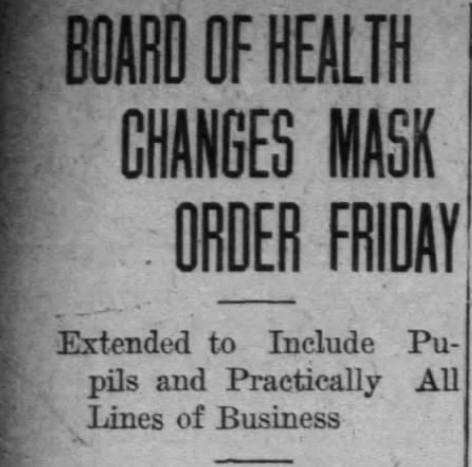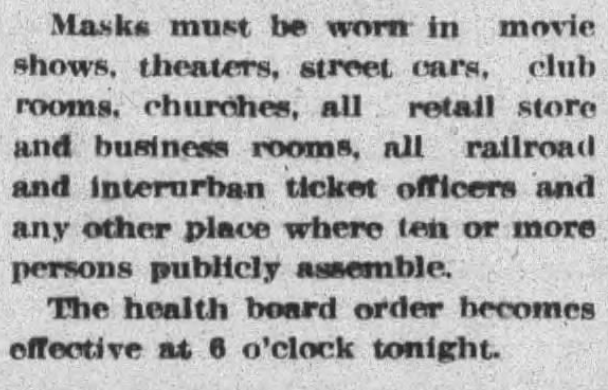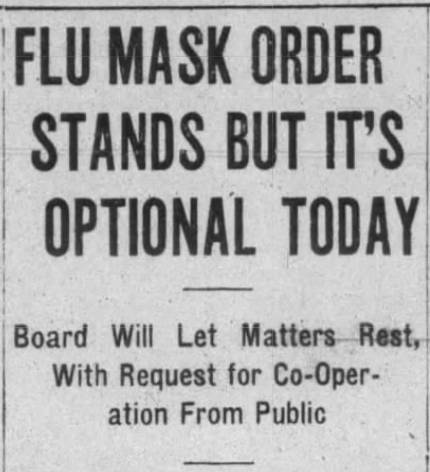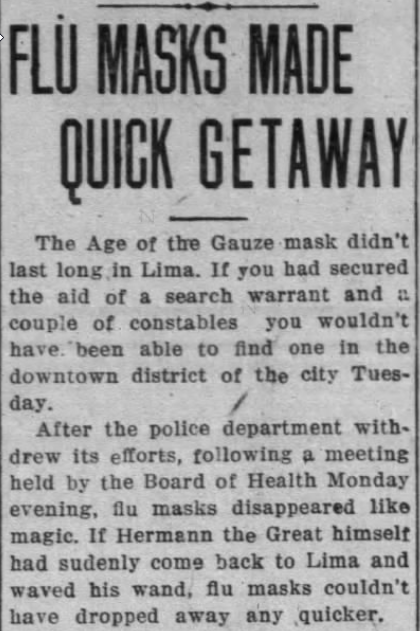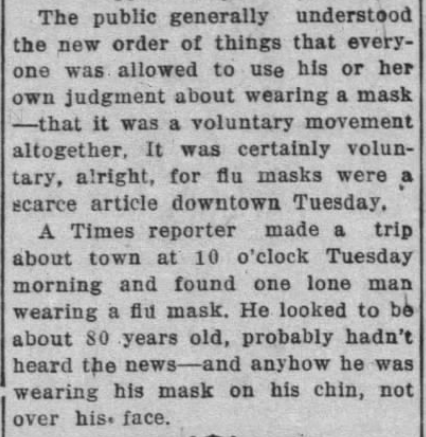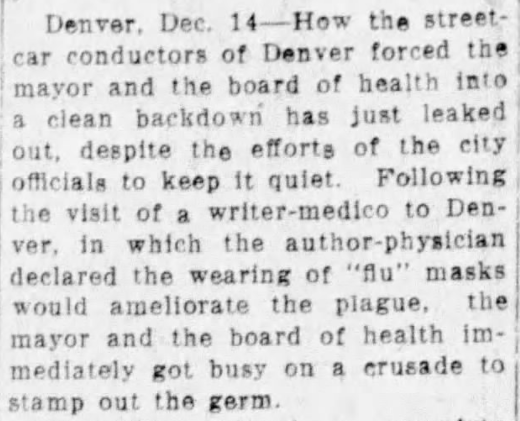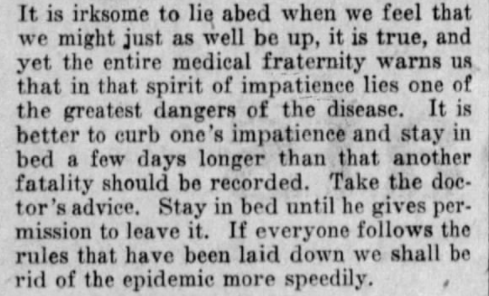THREAD: History repeats itself.
Spent some time reading Ohio news clippings from 1918-19 about the Spanish Flu pandemic. The parallels between then & now are remarkable — the health orders, the public backlash, people wearing masks wrong...
Let& #39;s take a look:
Spent some time reading Ohio news clippings from 1918-19 about the Spanish Flu pandemic. The parallels between then & now are remarkable — the health orders, the public backlash, people wearing masks wrong...
Let& #39;s take a look:
It would take too much time to give a comprehensive overview of how Ohio responded to that pandemic, but there are many constructive moments.
October 1918: Spread recorded throughout the state. Women asked to make masks at home for hospitals. Headline: “VIGILANCE, NOT HYSTERIA”
October 1918: Spread recorded throughout the state. Women asked to make masks at home for hospitals. Headline: “VIGILANCE, NOT HYSTERIA”
What to do with the schools? In Cleveland: “school authorities believe that closer supervision of the children can be accomplished in the school room than if they were at home or wandering about the streets. Special steps are being taken to air the school rooms thoroughly…”
In the absence of a statewide plan, cities enacted a patchwork of local responses.
Cincinnati closed ice cream parlors, but let saloons stay open for carryout only. Cleveland urged citizens to keep their car windows open.
Cincinnati closed ice cream parlors, but let saloons stay open for carryout only. Cleveland urged citizens to keep their car windows open.
The @OHdeptofhealth stepped in. The state drafted health orders for local departments to enforce.
In 2020, DeWine has never ordered churches to close (despite what some lawmakers imply!).
Back in 1918, though, churches in many communities were forced to closed.
In 2020, DeWine has never ordered churches to close (despite what some lawmakers imply!).
Back in 1918, though, churches in many communities were forced to closed.
Health orders in some cities will sound familiar.
- Columbus enacted a business curfew
- School children had to wear masks, as did those gathering in public places
- Those dining in restaurants had to wear masks while waiting for service and upon leaving their tables.
- Columbus enacted a business curfew
- School children had to wear masks, as did those gathering in public places
- Those dining in restaurants had to wear masks while waiting for service and upon leaving their tables.
The @OHdeptofhealth explained the need for action: “the regulations represent simply an effort to place reasonable restrictions around the intermingling of people.”
Why not give Ohioans freedom to handle this? State health commissioner: “The situation is not being met at all.”
Why not give Ohioans freedom to handle this? State health commissioner: “The situation is not being met at all.”
The rise in cases led some areas to set up emergency hospitals. Here is one example from Marion, which was in such dire shape that hospital workers needed community volunteers to help treat patients.
Government mandates can make a big difference with compliance. We learned that in Dec. 1918, when Lima rescinded its enforcement of a local mask rule in favor of merely requesting cooperation.
Almost immediately, the masks disappeared.
Almost immediately, the masks disappeared.
With the order still in place but enforcement out the window, Lima residents viewed mask wearing to be optional. And since it was optional, they opted not to wear them.
A Lima reporter visited town and documented only 1 person wearing a mask -- incorrectly.
A Lima reporter visited town and documented only 1 person wearing a mask -- incorrectly.
There was public backlash against health orders elsewhere. Denver shut down businesses/ordered masks. Following protests, the businesses were allowed to reopen if customers wore masks. None did. Streetcar conductors threatened to strike if a mask mandate were enforced on riders.
Newspapers and health officials warned about ‘returning to normal’ too quickly, especially for people who contracted the disease and thought they were beyond it: “in that spirit of impatience lies one of the greatest dangers in the disease.”

 Read on Twitter
Read on Twitter











